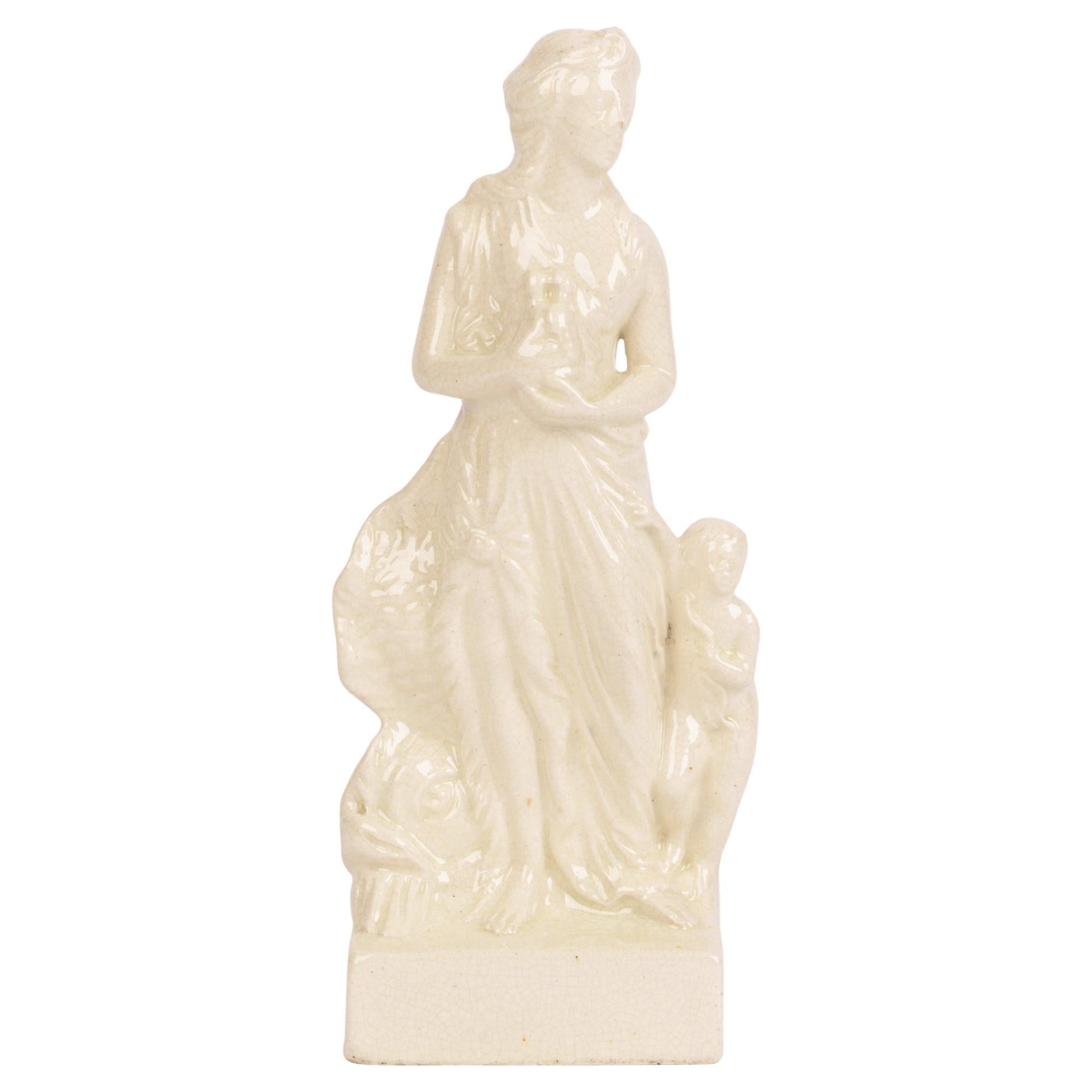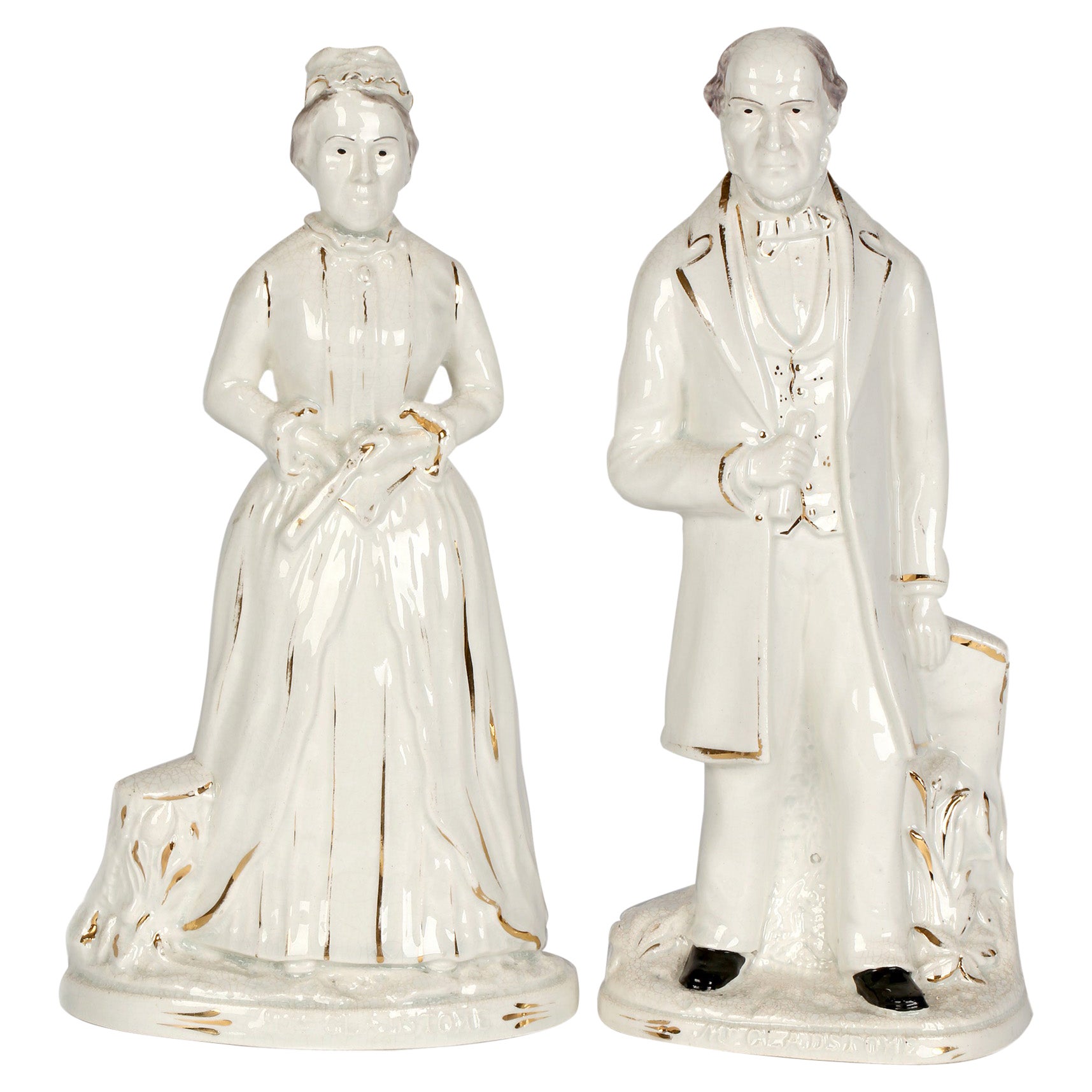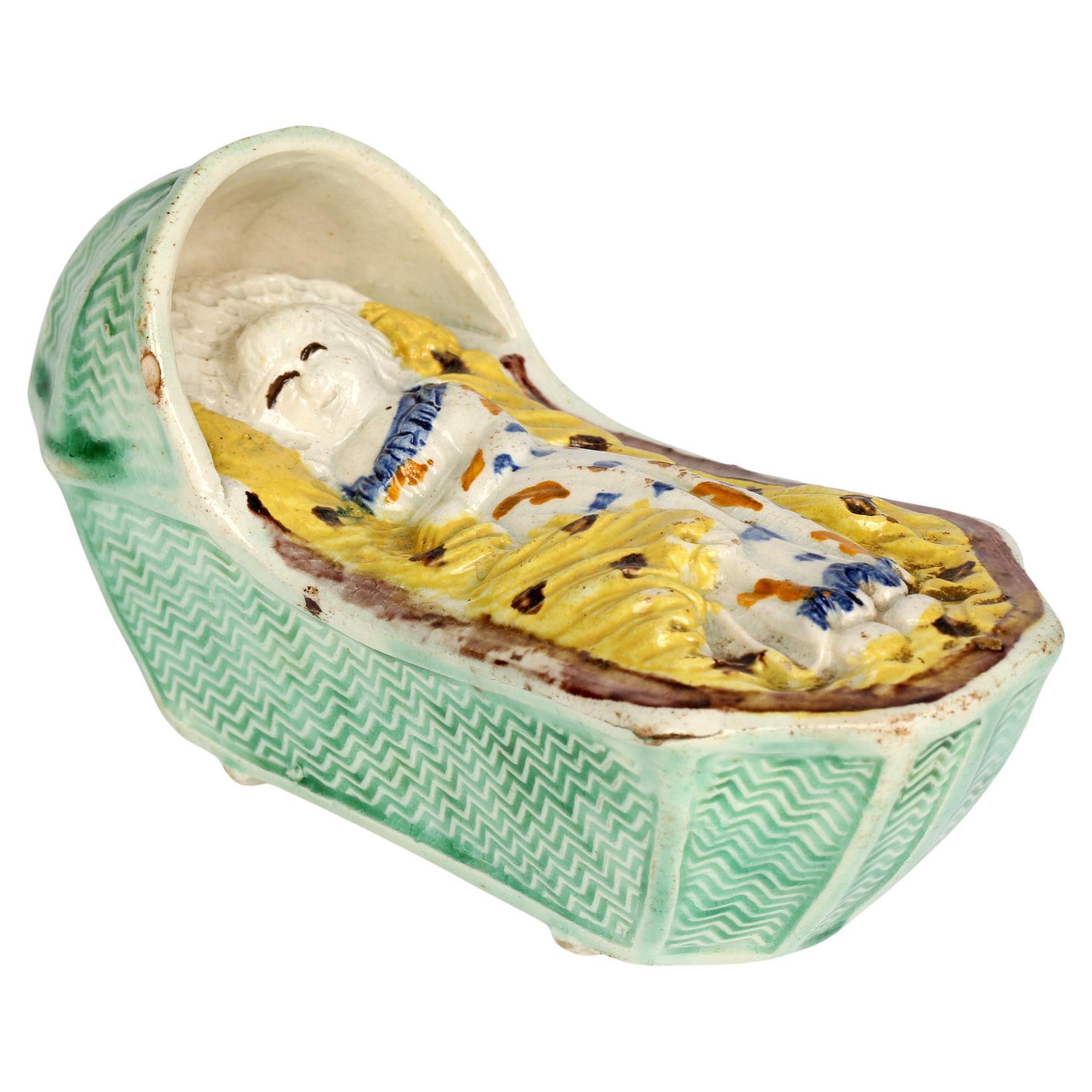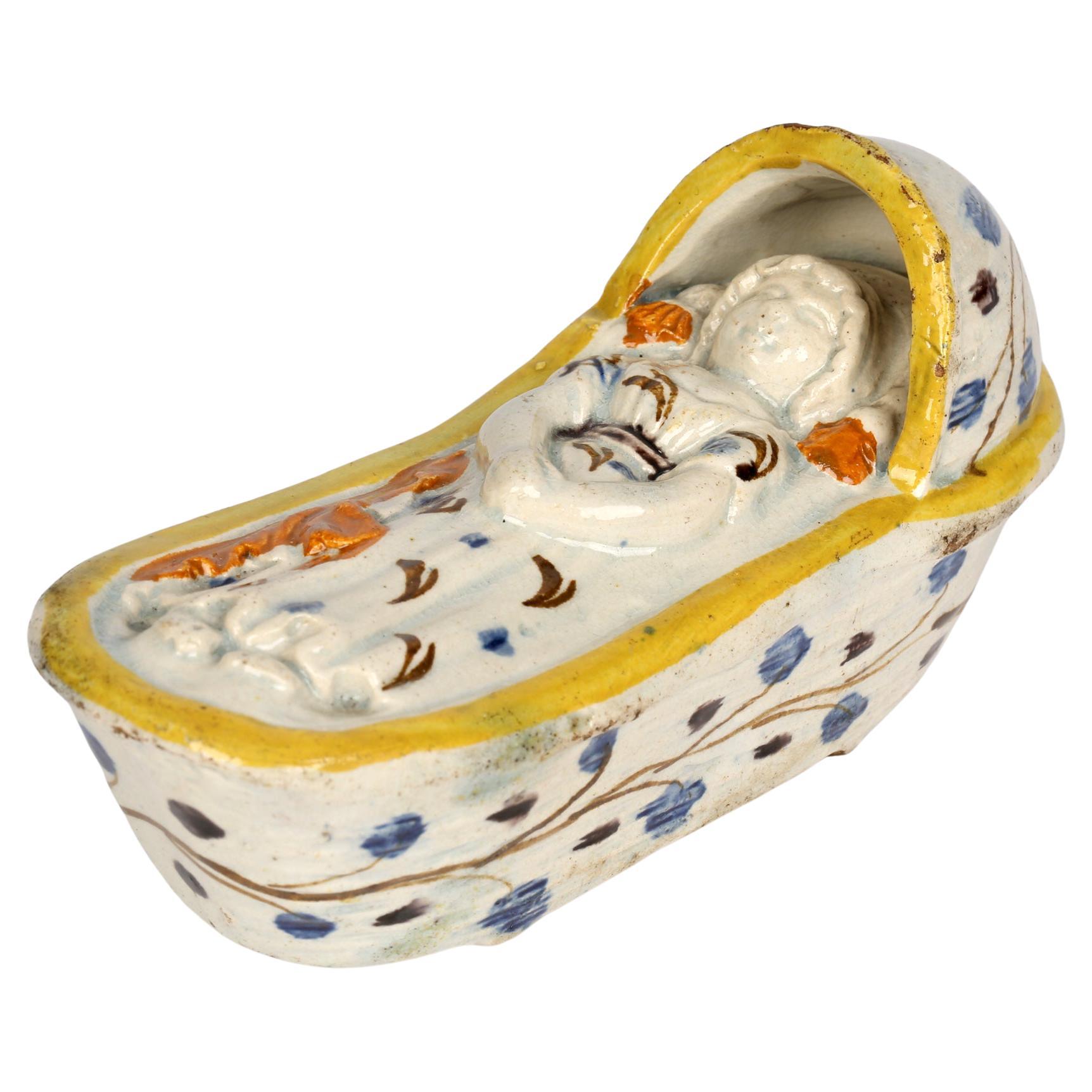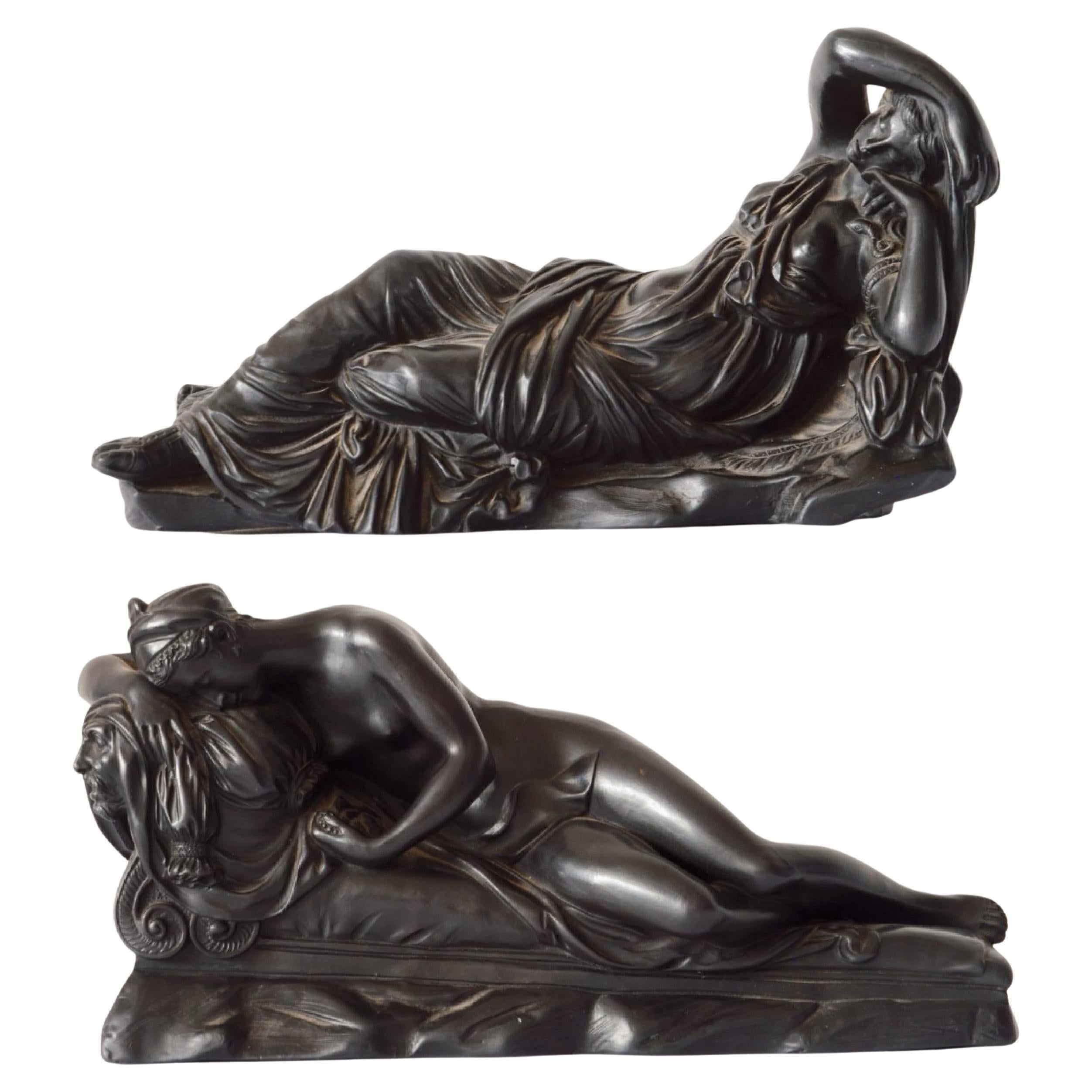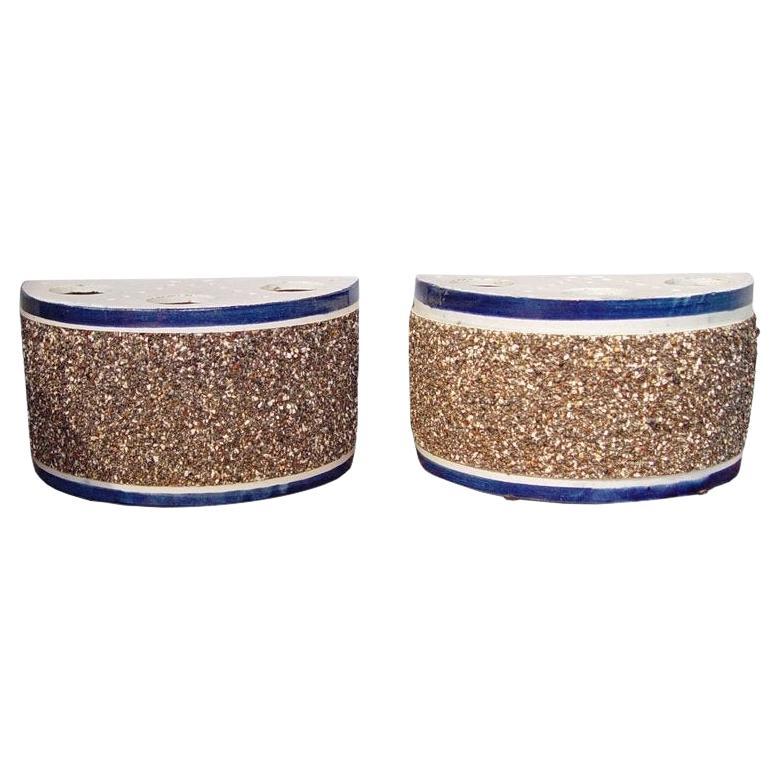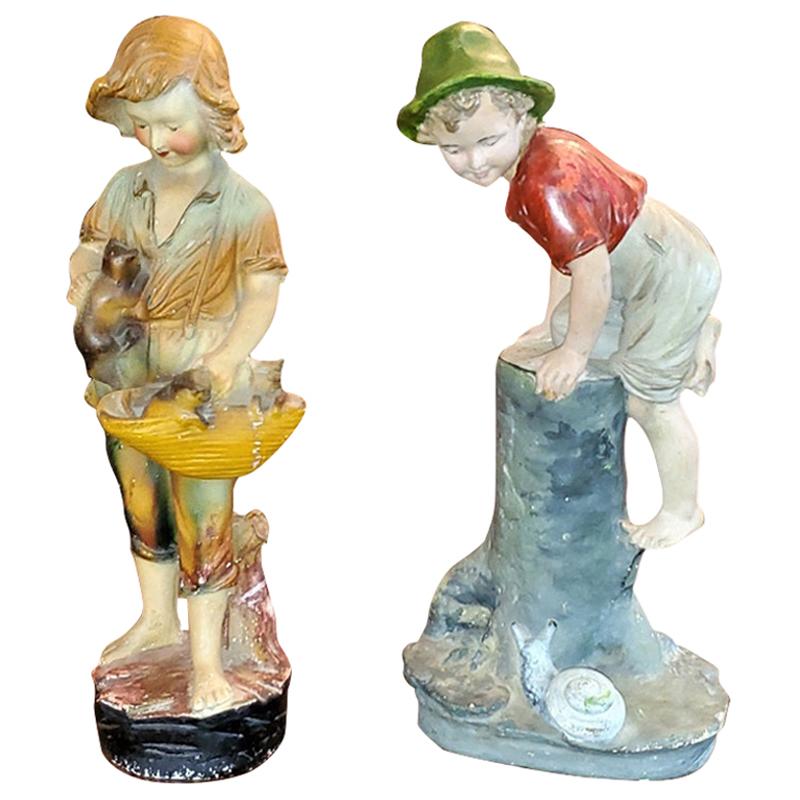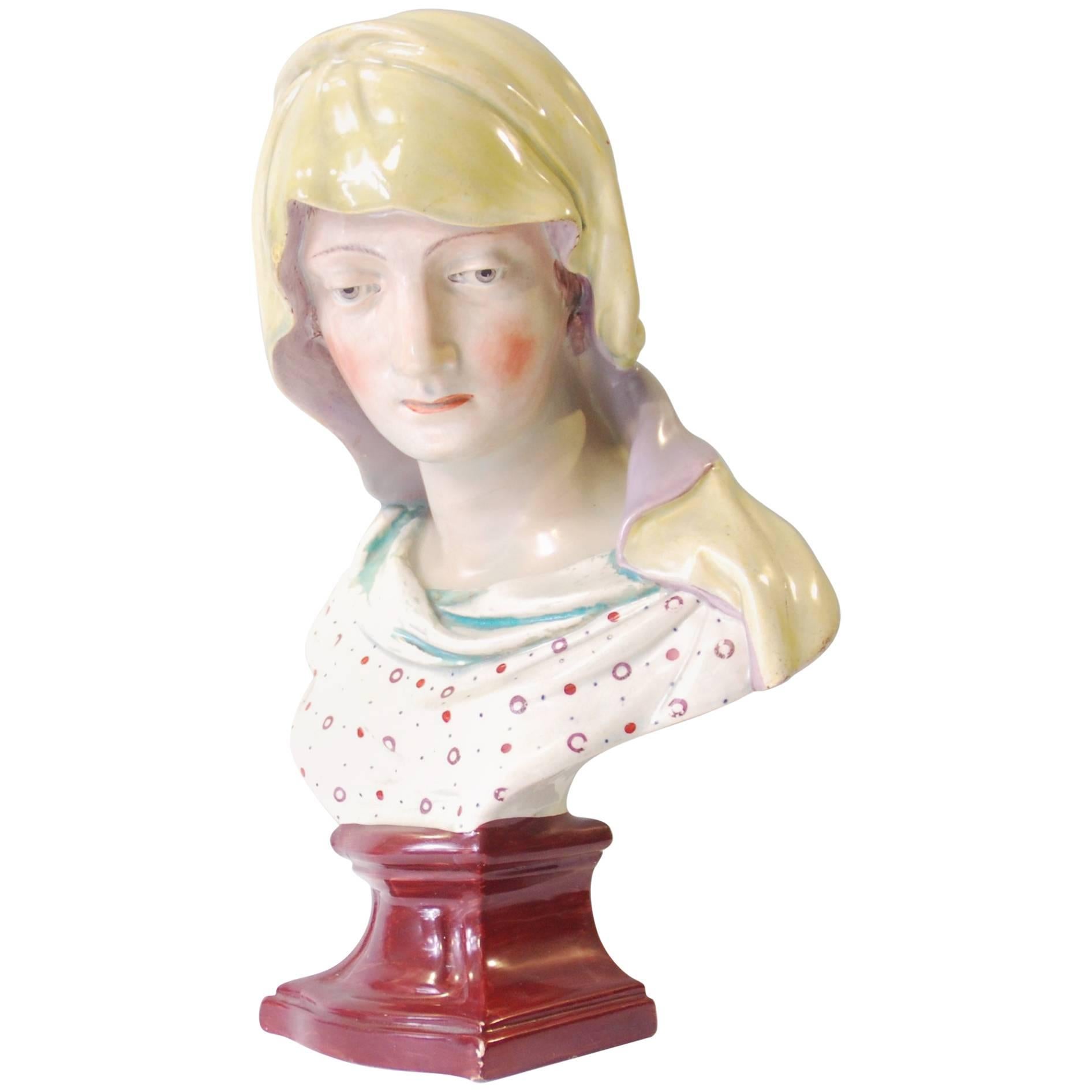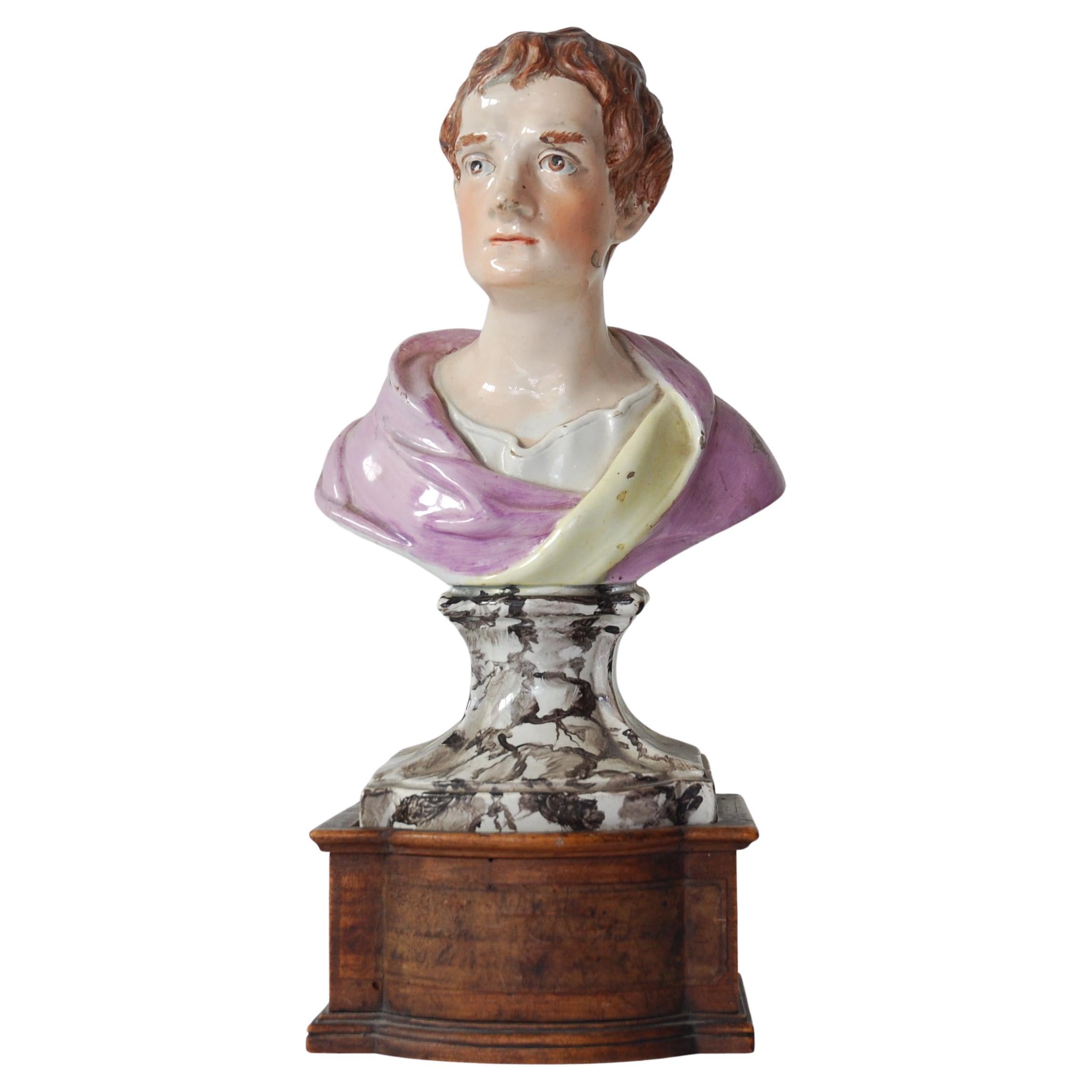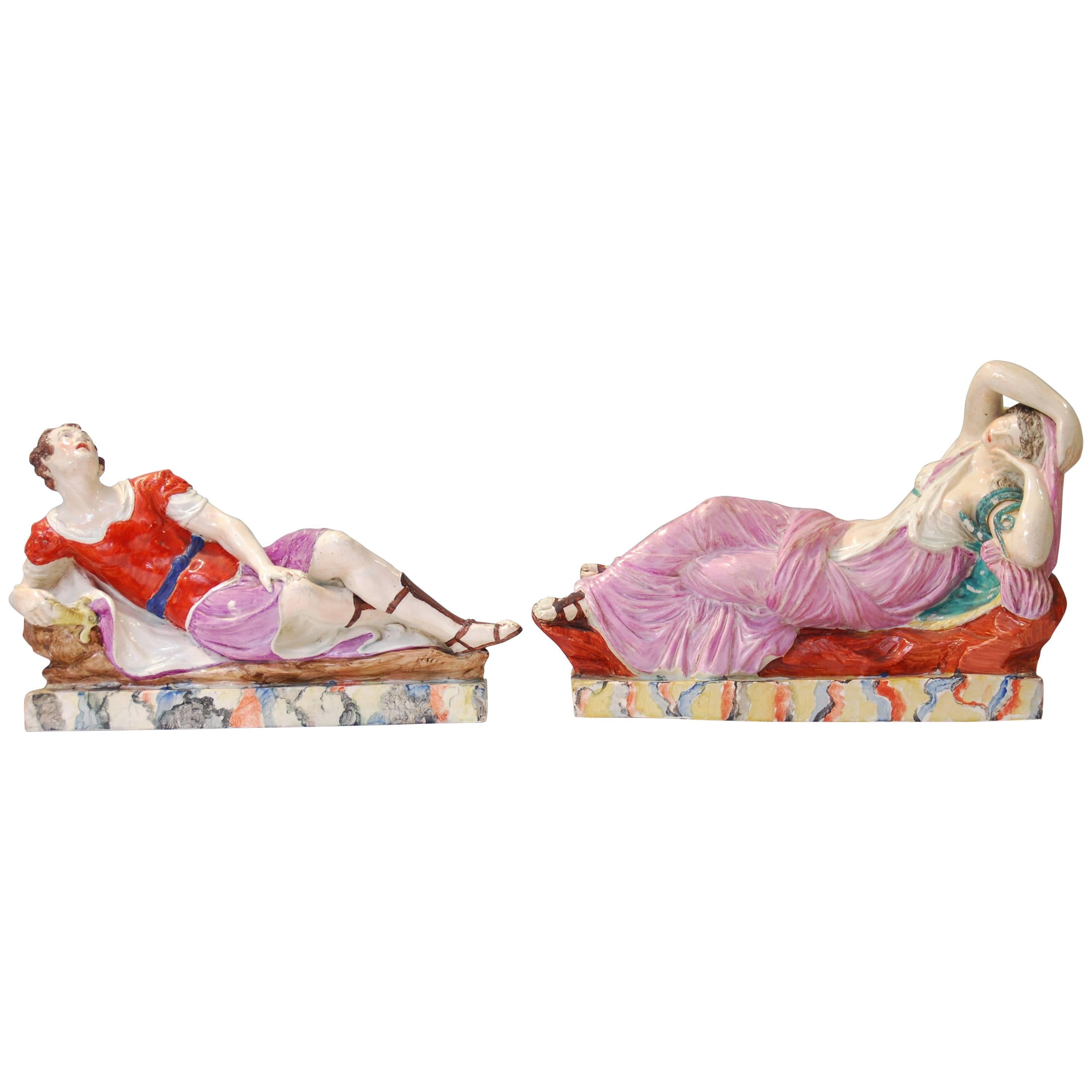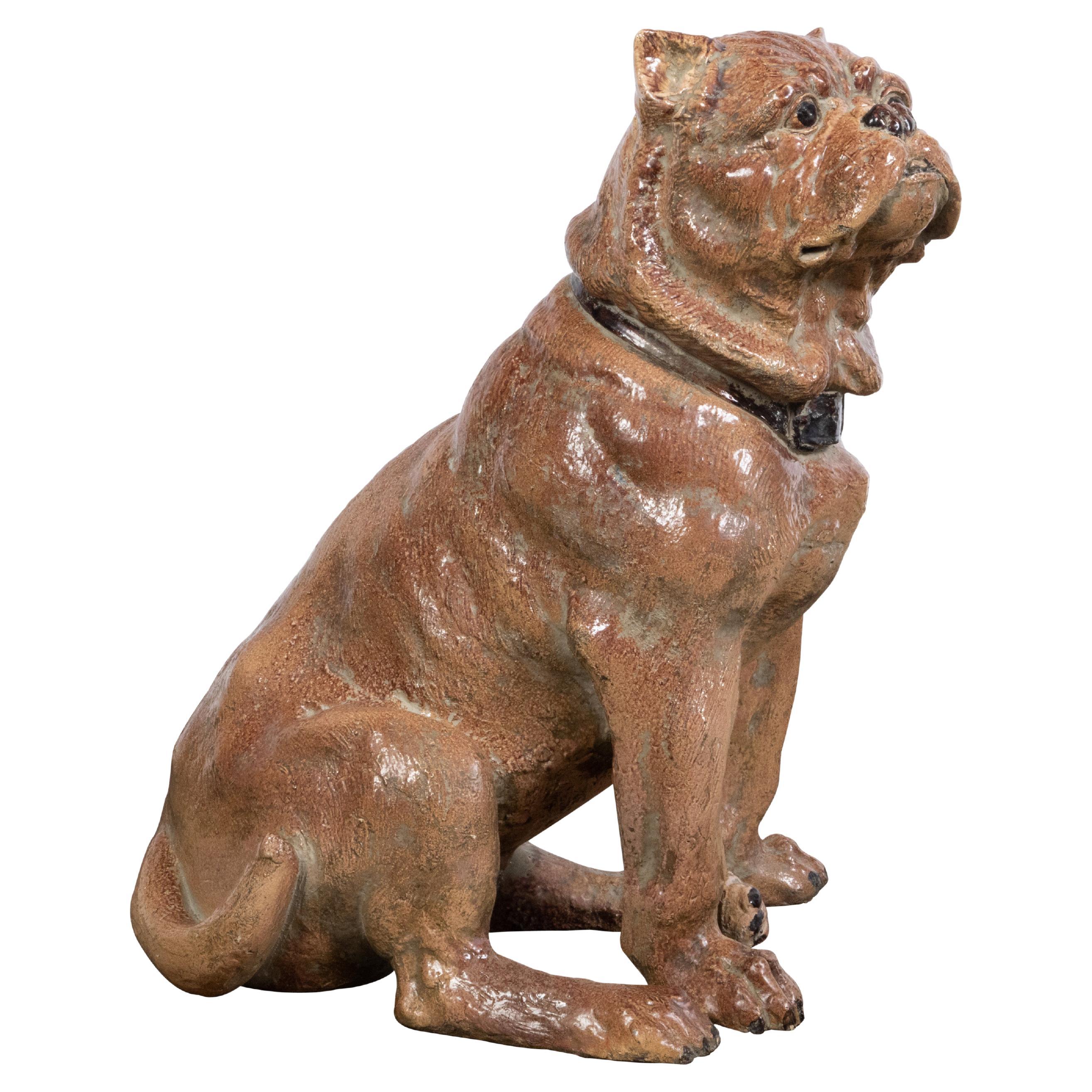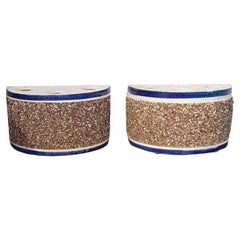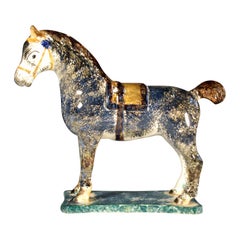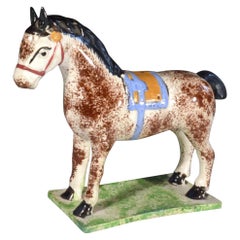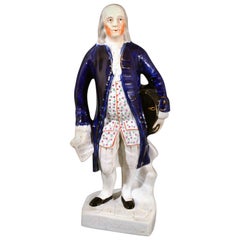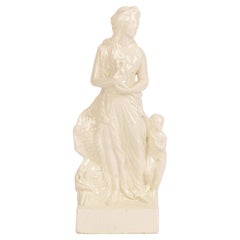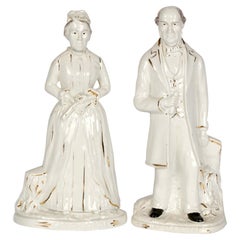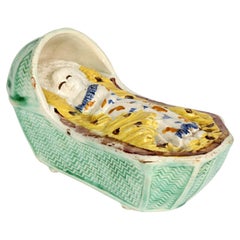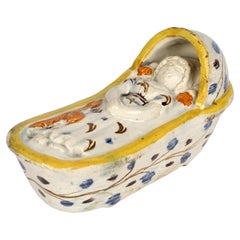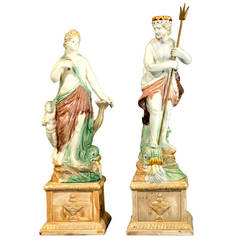
Pair of English Pottery Figures of Venus and Neptune
View Similar Items
Want more images or videos?
Request additional images or videos from the seller
1 of 5
Pair of English Pottery Figures of Venus and Neptune
About the Item
- Creator:Ralph Wood Pottery (Manufacturer)
- Dimensions:Height: 11.33 in (28.78 cm)
- Sold As:Set of 2
- Style:Georgian (Of the Period)
- Place of Origin:
- Period:
- Date of Manufacture:1785-1795
- Condition:Minor structural damages.
- Seller Location:Downingtown, PA
- Reference Number:Seller: ny5835A1stDibs: LU86101260806
About the Seller
5.0
Recognized Seller
These prestigious sellers are industry leaders and represent the highest echelon for item quality and design.
Gold Seller
Premium sellers maintaining a 4.3+ rating and 24-hour response times
Established in 1916
1stDibs seller since 2009
407 sales on 1stDibs
Typical response time: 1 hour
Associations
The Art and Antique Dealers League of AmericaAntiques Associations Members
Authenticity Guarantee
In the unlikely event there’s an issue with an item’s authenticity, contact us within 1 year for a full refund. DetailsMoney-Back Guarantee
If your item is not as described, is damaged in transit, or does not arrive, contact us within 7 days for a full refund. Details24-Hour Cancellation
You have a 24-hour grace period in which to reconsider your purchase, with no questions asked.Vetted Professional Sellers
Our world-class sellers must adhere to strict standards for service and quality, maintaining the integrity of our listings.Price-Match Guarantee
If you find that a seller listed the same item for a lower price elsewhere, we’ll match it.Trusted Global Delivery
Our best-in-class carrier network provides specialized shipping options worldwide, including custom delivery.More From This Seller
View All18th-Century English Pottery Pebbled Pearlware Bough Pots, Wood Family
By Ralph Wood Pottery
Located in Downingtown, PA
The pair of bough pots, attributed to the Ralph Wood Pottery, have a fixed pierced top with a blue band around the upper rim and the front panel wit...
Category
Antique Late 18th Century English Georgian Planters and Jardinieres
Materials
Pearlware, Pottery
Newcastle Prattware Pottery Model of a Horse, St. Anthony Pottery, Newcastle
By Saint Anthony Pottery
Located in Downingtown, PA
Newcastle Prattware Pottery model of a horse,
St. Anthony Pottery, Newcastle upon Tyne,
circa 1800-1820.
The fun, folky horse has a cropped tail s...
Category
Antique Early 19th Century English Regency Animal Sculptures
Materials
Pearlware, Pottery
Newcastle Prattware Pottery Horse, Attributed to St. Anthony Pottery
By Saint Anthony Pottery
Located in Downingtown, PA
Newcastle Prattware Pottery model of a horse,
Attributed to St. Anthony Pottery, Newcastle upon Tyne,
circa 1800-1810.
The horse with cropped ta...
Category
Antique Early 19th Century English Regency Animal Sculptures
Materials
Pearlware, Pottery
Staffordshire Pottery Figure of Benjamin Franklin, Named on Base
By Staffordshire
Located in Downingtown, PA
Large Staffordshire figure of Benjamin Franklin,
Named Franklin on base,
mid-19th century
This Staffordshire figure of Benjamin Franklin has a white base with the words Franklin mol...
Category
Antique Mid-19th Century European American Classical Figurative Sculptures
Materials
Pearlware, Pottery
Prattware Pottery Pearlware Tea Canister, Macaroni Figures
Located in Downingtown, PA
Prattware English Pottery Pearlware Tea Canister,
Macaroni Figures,
Possibly Bankfoot Pottery, Prestonpans. Scotland,
Circa 1790-1800.
The pearlware pottery tea caddy is decorated with "Macaroni" figures. On one side is depicted a gentleman wearing an exaggeratedly high wig with his servant standing beside him. On the other side is a similarly caricatured lady and her servant.
The caddy was possibly made in Scotland at Prestonpans where plaster of Paris moulds were recovered during excavations. Plaster of Paris moulds recovered during excavations below the floor of the Belfield Pottery in Prestonpans and almost certainly dumped from the earlier Bankfoot pottery.
Dimensions: 5 1/8 inches high x 3-1/4 inches wide x 2 inches deep.
Condition: Good with a small firing line to the foot-see photo.
The figures depicted on the tea caddy are modelled in very full relief and painted in green and brown. The narrow sides of the tea caddy are painted with a flowering vine. In the canted corners of the caddy is a stylized underglaze blue leaf.
During the 18th century, "macaroni" was the satirical term for men who sported elaborate clothing and continental affectations. Lampooning various occupations and specific styles, these are reproductions of period cartoons.
These amusing figures are after English caricatures produced between 1765 and 1790. The satirical jibes were directed at the young moderns of the time, known as "macaronies."
A group of privileged young Englishmen adopted styles and manners they had admired during their travels in Italy and France. They formed the Macaroni Club (macaroni being virtually unknown in England at the time), an eating club where they vied with one another in matters of dress and manners. Extremes developed and soon spread into larger society. With ribbon-and-lace festooned clothing, prim-verging-on-prissy manners and absurd coiffures, macaronies (both male and female) were subjects of ridicule.
Provenance: Private Maine Collection
Reference:
Haggarty, G 2010 ‘The Belfield Pottery Production Site Ceramic Resource Disk: The Northern Ceramic Society Journal Vol 26 (2009-10), 142-3 + CD ROM.
Pratt Ware: English and Scottish Relief Decorated and Underglaze Coloured Earthenware, 1780-1840, John and Griselda Lewis, Page 234.
Earle: The Earle Collection of Early Staffordshire...
Category
Antique Early 19th Century Scottish Georgian Pottery
Materials
Pottery
English Creamware Pottery Cauliflower Coffee Pot and Cover
By Staffordshire
Located in Downingtown, PA
English Creamware Pottery Cauliflower Coffee Pot and Cover,
Staffordshire,
Circa 1760-70
The lead-glazed earthenware creamware "cauliflower" coffeepot and over has a pear-shaped bo...
Category
Antique 1760s English Georgian Pottery
Materials
Creamware, Pottery
You May Also Like
Leeds Pottery Creamware Pottery Venus and Cupid Figure Group
By Leeds Pottery
Located in Bishop's Stortford, Hertfordshire
A good quality Leeds Pottery creamware figure group depicting Venus and Cupid with a large fish believed to date from the latter 19th century. The molded figure group stands raised on a square shaped base and is well modelled with nice detail with Venus dressed...
Category
Antique Late 19th Century English Greco Roman Figurative Sculptures
Materials
Creamware, Pottery
Staffordshire Mr & Mrs Gladstone Pair Political Portrait Pottery Figures
By Staffordshire
Located in Bishop's Stortford, Hertfordshire
A rare pair Staffordshire pottery political figures titled Mr & Mrs Gladstone and dating from the latter 19th century. The cast figures portray prime minister William Ewart Gladstone...
Category
Antique Late 19th Century English Late Victorian Figurative Sculptures
Materials
Pottery
Prattware English Pottery Cradle with a Sleeping Child
Located in Bishop's Stortford, Hertfordshire
A fine antique Georgian English Prattware pottery cradle containing a sleeping child dating from around 1800. The cradle sits raised on two rockers a...
Category
Antique 1790s English George III Figurative Sculptures
Materials
Pottery
Prattware English Pottery Cradle with a Sleeping Child
Located in Bishop's Stortford, Hertfordshire
A fine antique Georgian English Prattware pottery cradle containing a sleeping child dating from around 1800. The cradle sits raised on two rockers a...
Category
Antique 1790s English George III Figurative Sculptures
Materials
Pottery
Pair of Black Basalt Reclining Figures, Cleopatra and Lucretia, Neale circa 1780
By Neale & Co.
Located in Melbourne, Victoria
A fine, rare pair of figures in black basalt from the Neale Manufactory. The Neale pottery was founded in 1778 and ran until around 1792. They made very fine wares, and were on good terms with Wedgwood, with whom they combined shipments to the continent.
For two similar figures marked for Neale & Co. see Diana Edwards, Black Basalt, Wedgwood and Contemporary Manufacturers, Suffolk, 1994, p. 208, figs. 313 & 314.
Cleopatra and Lucretia are two women from different time periods and historical contexts, but are linked by their importance in Roman history, as well as by their tragic ends.
Cleopatra was a famous queen of ancient Egypt, who ruled from 51-30 BC. She was the last pharaoh of Egypt and is remembered for her intelligence, beauty, and political savvy. Cleopatra was involved in a romantic relationship with the Roman general and statesman, Julius Caesar, and later with the Roman general and politician, Mark Antony...
Category
Antique Late 18th Century English Neoclassical Pottery
Materials
Stoneware
$6,400 Sale Price / set
20% Off
Free Shipping
19th Century Pair of Polish/German Stoneware Figures
Located in Dallas, TX
Presenting a lovely 19th century pair of Polish/German stoneware figures.
Quite rare!
Not a matching pair but similarly themed, with the little girl holding a basket of kittens with one kitten climbing up her front and the other of a little boy climbing a tree stump with a snail at the base.
The ‘Little Girl’ is painted stoneware or earthenware and we are of the opinion is Polish in origin (or possibly Russian). It does not have any identifiable markings but it was originally with another similar style figurine (not included in this sale) which had markings that we were of the opinion were Polish markings.
The ‘Little Boy’ is painted pottery and we are of the opinion that it is either Polish or German in origin. It is slightly different in style an texture to the girl and has a more ‘bisque’ finish. The facial features are more defined and remind me of German bisque dolls...
Category
Antique Late 19th Century Polish High Victorian Figurative Sculptures
Materials
Pottery
Recently Viewed
View AllMore Ways To Browse
Purple Wedgwood
Antique Burslem Pottery
Wedgwood 1800
Plinth Wedgwood
Ralph Wood Pottery
Enoch Wedgwood
Staffordshire Neptune
Art Deco Bronze Onyx
French Onyx Sculpture
Grand Tour Souvenirs
Nude Sculpture Table
Polychrome Terracotta
The Paris Salons 1895
Venus And Cupid
Arab Bronze
Cast Lucite
Glass Nude Figure
Green Ceramic Figurine
